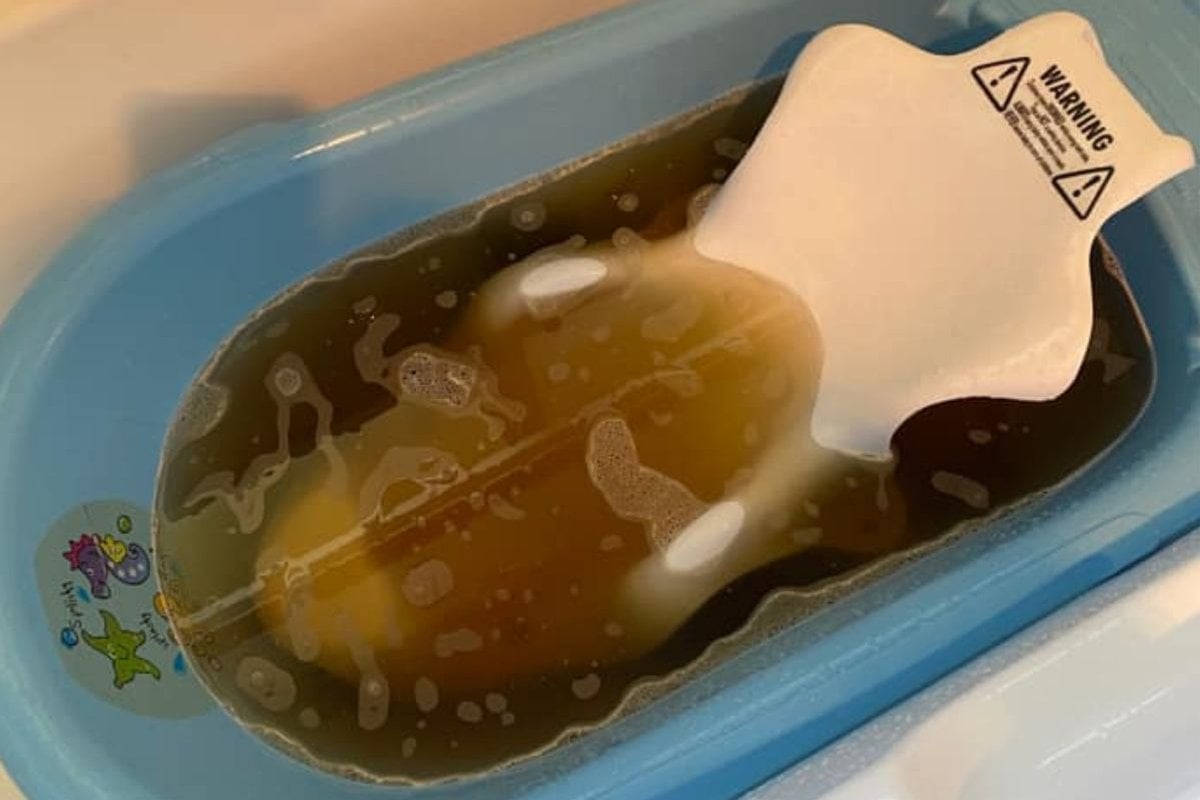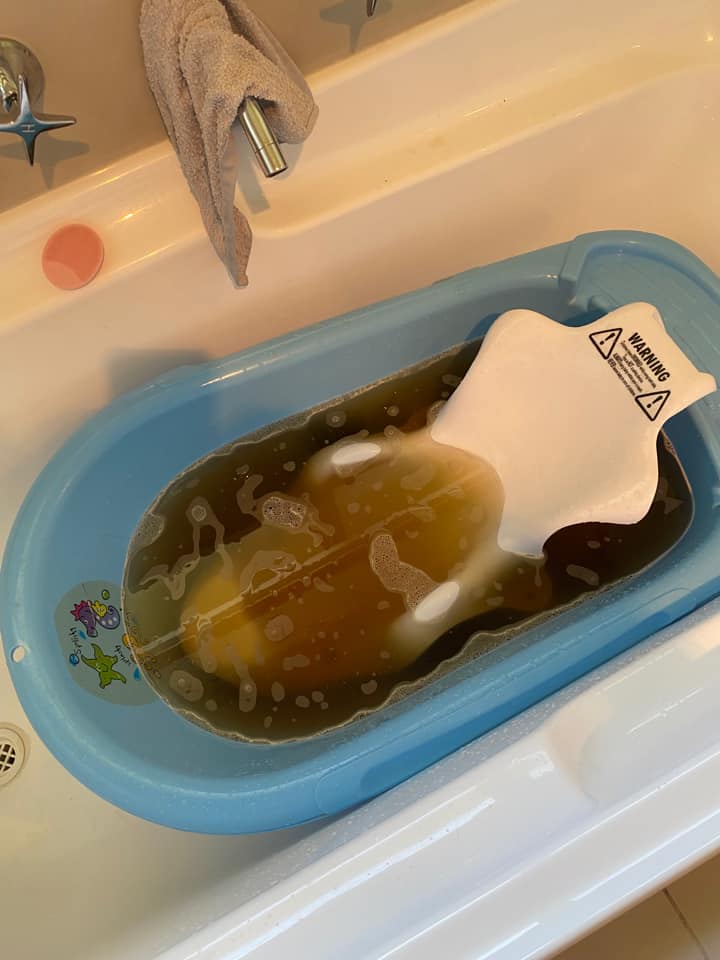
Fill the kettle. Wash the dishes. Take a shower.
In a country like Australia, we often take for granted that when we turn the tap, the water that flows from it is fit for consumption and bathing.
But that is not the reality for many forgotten residents of Moama.
Floods recently ravaged the Victoria/New South Wales border towns Echuca-Moama, with the Murray River peaking at a height of 94.97 metres above sea level on October 27.
Yet while the waters may have finally subsided, the local community are still grappling the impact.
Instead of clear water, when they turn on their taps, out gushes dirty, brown water.
Last week, residents vented their concerns on social media.
Nurse Sarah Dixon had been preparing a bath for her 13-week-old baby.
"Ours [sic] is shocking tonight," she posted, in accompaniment to a photo.
 Image: Facebook/@Sar Dixon
Image: Facebook/@Sar Dixon
